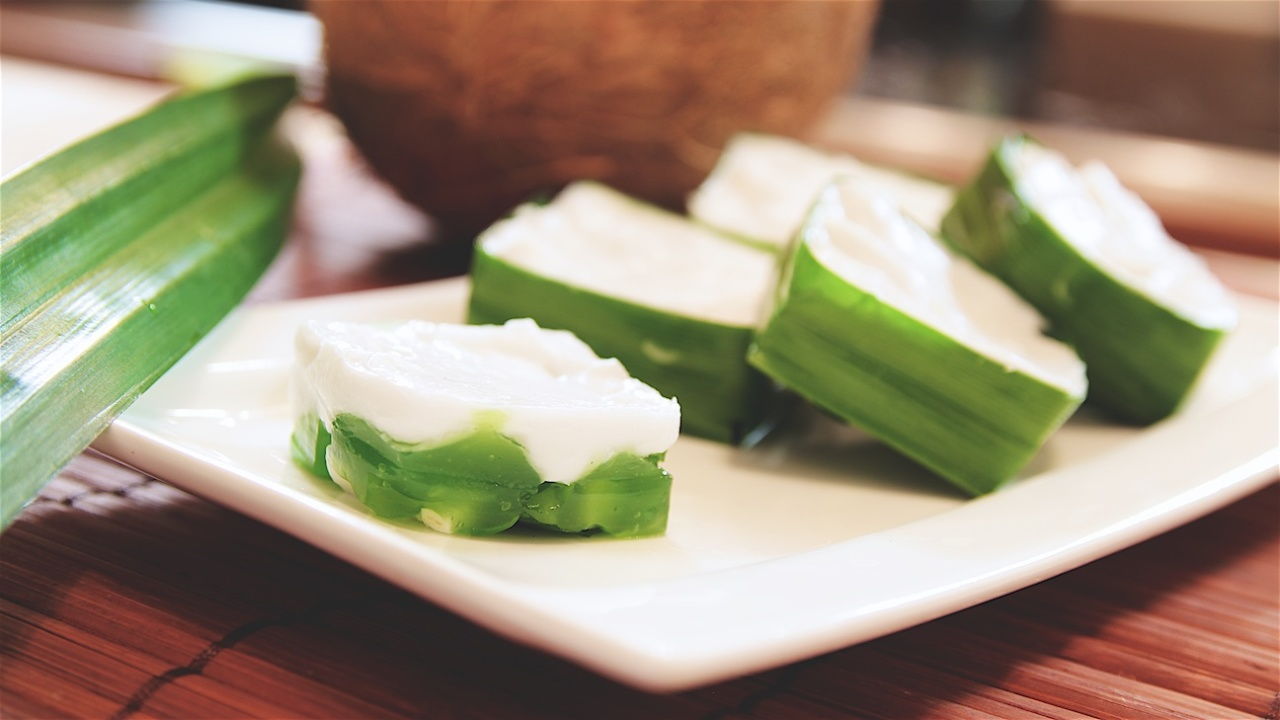Kuih Tako is a traditional kuih found in Malaysia and also Thailand. Made up of two coloured layers, it is a big favourite during the month of Ramadan. Although both layers of kuih tako is made of mung bean flour, each layer has its individual taste. The bottom layer of kuih tako is sweet, green in colour and has chunks of Chinese turnip. The top layer is white and savoury as it consists of coconut milk.
Substitute for Chinese turnip
As it is not common to find Chinese turnip in Europe, I used water chestnuts instead.
Use the lowest heat to cook
Cook the mung bean flour at low to medium heat so that it does not burn. Ensure that it should be thick enough to be placed into the folded pandan leaves baskets.
Substitute for mung bean flour
Traditionally, kuih tako uses mung bean flour which is also sold as 'hoen kwe' flour. Mung bean flour can be substituted with corn starch or corn flour. If either of these flours are replaced by rice flour, then it will not be kuih tako but 'kuih pelita'. Both of these kuih look very similar indeed. However, kuih pelita uses rice flour and is wrapped with banana leaves instead.
Substitute pandan leaves
Fresh or frozen pandan leaves is needed to make the baskets to hold kuih tako. If you are unable to find them, simply use a bowl or any container to hold the dessert.
You can make the pandan leaves baskets a day before. Kuih tako should be stored in the refrigerator to ensure it is really chilled before serving.
